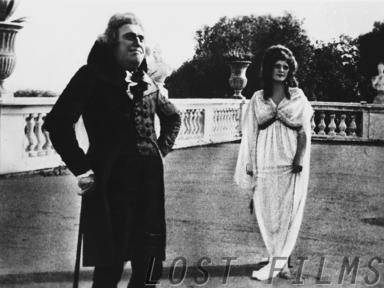Films on Films – Prog. 3
Weimar Film Tales
DER FILM IM FILM: EIN BLICK HINTER DIE KULISSEN [Film on Film: A Peek behind the Scenes] (DE 1925)
regia/dir: Friedrich Porges. scen: Friedrich Porges, Stefan Lorant. photog: Stefan Lorant. cons.scientifico/scientific advisor: Curt Thomalla. prod: Richard Hirschfeld GmbH. dist: Diana-Film GmbH; Deutsch-Amerikanische Film-Union AG. uscita/rel: 26.06.1925. copia/copy: 35mm, 382 m., 18′ (18 fps); did./titles: GER. fonte/source: Deutsche Kinemathek, Berlin.
Der Film im Film was the German answer to the mid-1920s trend for behind-the-scenes and quasi-historical educational films about the technological and artistic development of cinematography. Directed by the Vienna-born journalist, screenwriter, and director Friedrich Porges (1890-1978) and promoted as a Kulturfilm, it consisted of six parts exploring the various realms of filmmaking: “The History of Cinematography,” “The Thematic Development of Film,” “The Miracle of Film,” “The Development of Film,” “From the Filmstrip to the Finished Film,” and “Artistic Work on Film.” Similar to its French and American counterparts, Der Film im Film opened with an account of the beginnings of cinema from the Thaumatrope through Muybridge’s sequential photographs up to the first cameras and projectors. It then proceeded to cover the individual areas of filmmaking, including trick photography, script development, costume and props, camerawork, and film laboratory services. Interestingly, although the scientific advisor of the film, Dr. Curt Thomalla, was in charge of the medical film archive at Ufa, non-theatrical motion pictures for education and research were not mentioned.
In the sixth and perhaps most intriguing section, which is the only one that partly survives, various “behind-the-scenes” shots from the major German film studios at the height of Weimar-era filmmaking can be seen, including: the Viennese set of E. A. Dupont’s Das alte Gesetz (1923), Hanns Schwarz, Harry Liedtke, and Hanni Weisse during rehearsals for Nanon (1923), production shots from the making of Fritz Lang’s Die Nibelungen (1922–24), footage from the making of Paul Leni’s Das Wachsfigurenkabinett (1924), and the Calvary and Mount of Olives sequences filmed at the Staaken studio for Robert Wiene’s I.N.R.I. (1923) with Henny Porten and Asta Nielsen.
Der Film im Film premiered at Berlin’s Richard Oswald-Lichtspiele. The film shows a distinct structure more along the lines of a filmed report, and compares with the similar but later Filmstadt Hollywood (1928), based on the book of the same title by Arnold Höllriegel. “Film is not child’s play,” the last intertitle concludes, “but a lot of work!”
Dimitrios Latsis
DIE WUNDER DES FILMS: EIN WERKLIED VON DER ARBEIT AM KULTURFILM [The Wonders of Film: An Industrial Ode to Work in Kulturfilm] (DE 1928)
regia/dir, scen: Edgar Beyfuß. prod: Dr. Edgar Beyfuß-Film (Berlin). dist: Weltfilm. v.c./censor date: 02.09.1929. copia/copy: 35mm, 1337 m. (orig. 1387 m.), 50′ (22 fps); did./titles: GER. fonte/source: Bundesarchiv-Filmarchiv, Berlin.
Die Wunder des Films is one of several German films from the 1920s that thematized filmmaking through the re-use of existing archival footage. Other titles include Friedrich Porges’s Der Film im Film from 1924 and the Ufa production Henny Porten. Leben und Laufbahn einer Filmkünstlerin (Henny Porten: Life and Career of a Film Artist) from 1928. These were often classified as “cross-section films” (Querschnittsfilme), because they presented viewers with significant samples (i.e., a cross-section) of a given sector of contemporary film production. But Die Wunder des Films is unique in its focus on Kulturfilm – scientific, educational, and promotional film – rather than the entertainment industry and its stars. The film’s director, Edgar Beyfuß (1893-1936), was not only a producer of Kulturfilms, but also a prolific writer and lecturer on the topic, who edited the monumental Kulturfilmbuch of 1924. For Die Wunder des Films, Beyfuß received funding from the Bund Deutscher Lehr- und Kulturfilmhersteller (Association of German Educational and Cultural Filmmakers).
Dedicated to the “unknown cameraman,” Die Wunder des Films seeks to showcase the skills and techniques of film crews working “below the line” at institutions such as the Ufa-Kulturabteilung (Ufa Cultural Department) and the Institut für Kulturforschung (Institute for Cultural Research). The film is also especially valuable as a documentation of the camera women and other female crew members working widely within the film industry (including Lotte Reiniger and Lola Kreutzberg, both of whom feature in the Giornate’s “Weimar Shorts” series this year). Beyond the question of film labour, however, Die Wunder des Films also provides a documentation of the many technologies and techniques that made Kulturfilm possible: devices for filming medical operations, techniques for manipulating temporal perception (time-lapse and slow-motion filming), various forms of animation, and colour technologies. In addition, it offers an interesting historical perspective on the practice of experimental film, which underscores the infrastructural links between the interwar avant-garde and sectors of film production we would now classify as “useful cinema.”
Beyfuß made at least two versions of Die Wunder des Films. The film was originally created without intertitles so that Beyfuß himself could lecture during the screening. But he also released a stand-alone version with intertitles (the one shown here). And he then re-used some of the same material to make a shorter sound film the same year, with the title Wie ein Trickfilm entsteht (How a Trickfilm is Made, 1929).
Die Wunder des Films found distribution, among other places, within the left-wing distribution company Weltfilm, which is best-known as a distributor of Soviet film, but also served as an outlet for Kulturfilms and documentaries. (Alongside Beyfuß’s film, the 1929 Weltfilm catalogue also included titles such as Ruttmann’s Berlin, Symphony of a City, the Ufa Kulturfilm Das Blumenwunder [The Miracle of Flowers], and numerous films by Albrecht Viktor Blum). Beyfuß was also a collaborator with the left-wing film society Volksfilmverband (People’s Film Association), and regularly contributed to the society’s journal Film und Volk, with articles on film and medicine, colour film, sound film, and other topics. The Volksfilmverband offered an advantageous screening circuit for films like Die Wunder des Films, which toured (with Beyfuß lecturing) through the society’s local chapters in Berlin, Braunschweig, and other cities.
Michael Cowan






